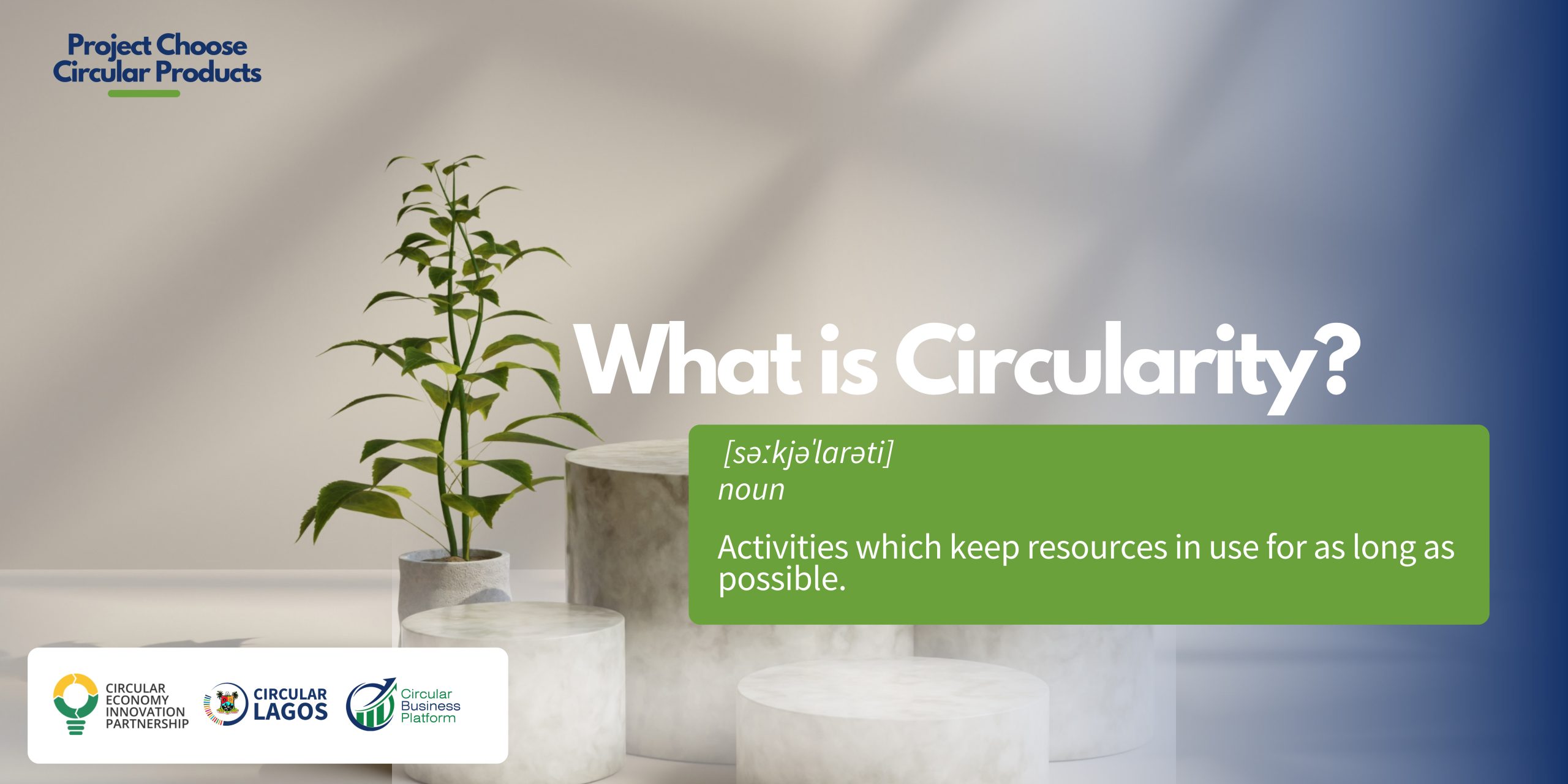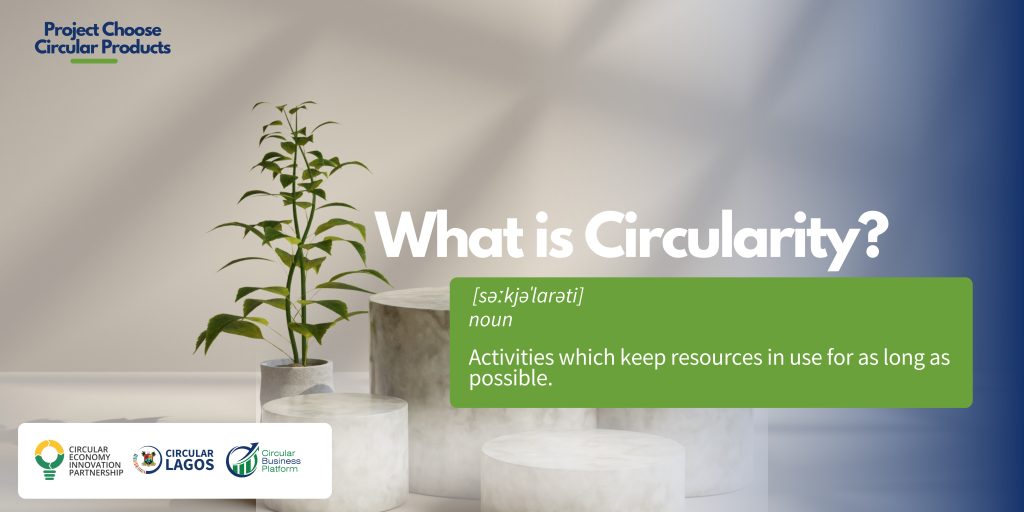
What is Circularity?(Series Part 1)

“Circularity” refers to activities which keep resources in use for as long as possible. Two key ideas that underpin the concept of “circularity” are:
Sufficiency
Can I make do with what I have? Do I really need new materials or products? Sufficiency is the opposite of consumerism because it teaches us to value what we already have rather than to search satisfaction through material objects.
Efficiency
Can I do things in a way that is cheaper, faster and consumes less resources? Efficiency in circularity emphasises that it is possible to produce goods and services using less raw materials across the lifecycle of a product, which is good for both the environment and for our bottom-lines.
We can see examples of sufficiency all around us in Lagos. Tires, plastic and glass bottles and cement bags are all re-purposed for different uses after they have their original use has been exhausted. We see tires used as road posting, furniture, swings and barriers, plastic and glass bottles used to distribute peanuts, motor and cooking oil and juices and cement bags as plant nursery beds.
But because these examples of sufficiency are only one part of a product’s lifecycle, they are not necessarily examples of environmental efficiency because these materials will likely end up in landfills, sewage or burned at the end of their life.
“To be fully circular, we must always consider what happens to a material or product before and after it is consumed”.
Reflections:
In what ways do you as an individual practice sufficiency?
Are you a part of an organisation? How does your organisation practice circular efficiency?
Why Circularity?
Why not circularity? Think about it for a second, would you want to throw away items or gadgets shortly after you spent your hard earn money buying them? Wouldn’t it be awesome if all items were designed to stand the test of time? What if after using a product, there was somewhere you could send it to so it could be used to create a new product?
Circularity affords us several benefits, and here are our top three reasons why we know you can and should be circular:
It is good for the environment
When you buy circular products and services and dispose of your products in a responsible way, you are diverting materials from landfills and from leaking into the environment by keeping them in use for a longer period. You are also saving nasty carbon emissions.
You are contributing to the development of the local economy
One of the cornerstones of circular economy is a “closed loop”. In a closed loop, waste that is produced within a value chain is channeled to others in the chain to create new forms of value. PET bottle recycling is a prominent example, as the more PET bottles that are collected locally, there is a more compelling reason to invest in local PET recycling and manufacturing. The same principles apply to formal e-waste, textile and battery recycling.
You are driving innovation
By consuming circular goods and products, you are challenging established ways of producing and consuming things. This is not only great for competition, but also for driving positive change in the face of many global, national and local challenges. By adopting circular behaviours, you choose to push for new ideas.
This article is published as a part of campaign materials for “PROJECT CHOOSE CIRCULAR PRODUCTS”, a digital campaign to educate Nigerians on circular products.


